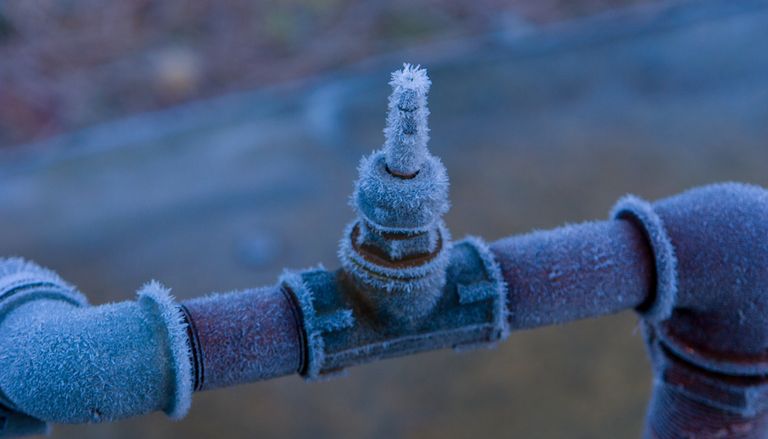Tips to Avoid Frozen Pipes in Winter: Pro Guidance
Tips to Avoid Frozen Pipes in Winter: Pro Guidance
Blog Article
This post in the next paragraphs on the subject of Preventing and dealing with frozen pipes is highly insightful. You should look it over.

Cold weather can wreak havoc on your plumbing, specifically by freezing pipelines. Below's just how to avoid it from occurring and what to do if it does.
Introduction
As temperatures decline, the threat of frozen pipelines boosts, possibly leading to pricey repair work and water damages. Understanding exactly how to stop icy pipelines is important for property owners in cool climates.
Understanding Icy Pipelines
What triggers pipelines to ice up?
Pipelines ice up when subjected to temperature levels below 32 ° F (0 ° C) for prolonged periods. As water inside the pipes ices up, it increases, taxing the pipeline walls and potentially creating them to break.
Dangers and damages
Frozen pipelines can cause water disturbances, residential or commercial property damages, and costly repair work. Ruptured pipelines can flood homes and cause substantial structural damage.
Indications of Frozen Piping
Determining icy pipelines early can avoid them from bursting.
Exactly how to recognize icy pipelines
Try to find reduced water flow from taps, unusual smells or noises from pipelines, and visible frost on revealed pipelines.
Avoidance Tips
Insulating at risk pipes
Wrap pipelines in insulation sleeves or make use of heat tape to protect them from freezing temperature levels. Focus on pipelines in unheated or exterior locations of the home.
Home heating techniques
Keep interior rooms effectively heated up, specifically locations with pipes. Open cabinet doors to allow cozy air to circulate around pipelines under sinks.
Protecting Outdoor Plumbing
Yard hoses and exterior taps
Disconnect and drain pipes yard tubes prior to wintertime. Set up frost-proof spigots or cover outside faucets with insulated caps.
What to Do If Your Pipelines Freeze
Immediate activities to take
If you suspect icy pipelines, keep faucets open up to eliminate stress as the ice thaws. Utilize a hairdryer or towels taken in hot water to thaw pipes gradually.
Long-Term Solutions
Architectural modifications
Take into consideration rerouting pipelines far from outside walls or unheated areas. Add added insulation to attic rooms, cellars, and crawl spaces.
Upgrading insulation
Invest in top quality insulation for pipes, attics, and walls. Proper insulation aids maintain regular temperatures and lowers the danger of icy pipes.
Verdict
Avoiding icy pipes calls for proactive actions and quick feedbacks. By understanding the reasons, signs, and preventive measures, home owners can protect their plumbing throughout winter.
5 Ways to Prevent Frozen Pipes
Drain Outdoor Faucets and Disconnect Hoses
First, close the shut-off valve that controls the flow of water in the pipe to your outdoor faucet. Then, head outside to disconnect and drain your hose and open the outdoor faucet to allow the water to completely drain out of the line. Turn off the faucet when done. Finally, head back to the shut-off valve and drain the remaining water inside the pipe into a bucket or container. Additionally, if you have a home irrigation system, you should consider hiring an expert to clear the system of water each year.
Insulate Pipes
One of the best and most cost-effective methods for preventing frozen water pipes is to wrap your pipes with insulation. This is especially important for areas in your home that aren’t exposed to heat, such as an attic. We suggest using foam sleeves, which can typically be found at your local hardware store.
Keep Heat Running at 65
Your pipes are located inside your walls, and the temperature there is much colder than the rest of the house. To prevent your pipes from freezing, The Insurance Information Institute suggests that you keep your home heated to at least 65 degrees, even when traveling. You may want to invest in smart devices that can keep an eye on the temperature in your home while you’re away.
Leave Water Dripping
Moving water — even a small trickle — can prevent ice from forming inside your pipes. When freezing temps are imminent, start a drip of water from all faucets that serve exposed pipes. Leaving a few faucets running will also help relieve pressure inside the pipes and help prevent a rupture if the water inside freezes.
Open Cupboard Doors
Warm your kitchen and bathroom pipes by opening cupboards and vanities. You should also leave your interior doors ajar to help warm air circulate evenly throughout your home.

I'm certainly very focused on Prevent Frozen Pipes and I am praying you enjoyed my blog entry. If you please take the time to promote this blog post if you enjoyed it. Thank you for your time spent reading it.
Make An Appointment Report this page